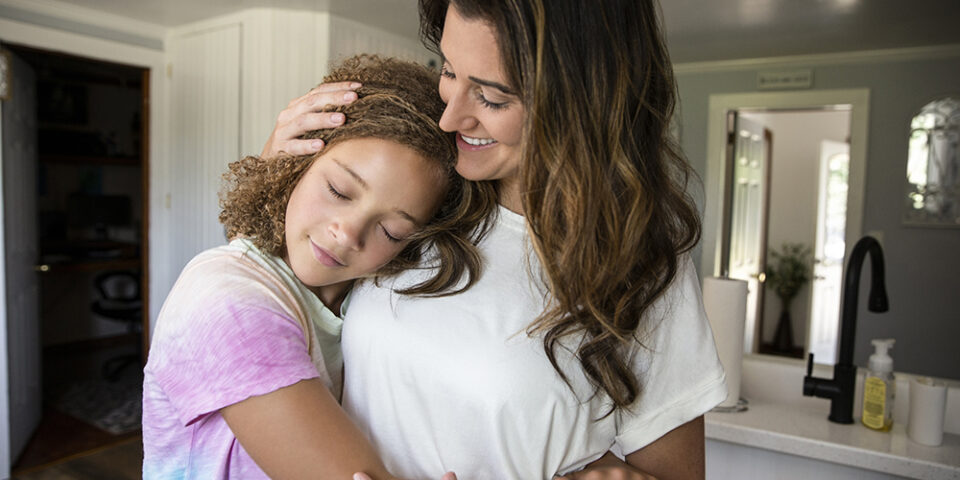How to boost resiliency in children
As much as we’d like to, parents can’t protect their children from all of life’s difficulties and distress. However, we can help them build the skills needed to weather challenging times. Pediatrician Kerry Sease, MD, explained how to help boost your kids’ resiliency.
The challenges
Unfortunately, children’s mental health in the United States has been declining. Consider these facts:
- 1 in 6 children aged two to eight has a mental, behavioral or developmental disorder.
- 1 in 6 children aged six to 18 is experiencing a mental health disorder annually.
- Suicide is one of the leading causes of death among youth between the ages of 10 and 24.
“We know that the COVID pandemic has only exacerbated this problem,” Dr. Sease said.
In May of 2020, emergency room visits for suspected suicide attempts began to increase for adolescents aged 12 to 17, especially among girls with an increase of 50.6%.
This led the American Academy of Pediatrics and the American Academy of Child and Adolescent Psychiatrists, as well as the Children’s Hospital Association, to declare a state of emergency on mental health.
What can we do to improve mental health in children?
Dr. Sease said relational health can serve as an adversity buffer and help us cope with future stressors.
“Being resilient doesn’t mean that the person won’t experience adversity,” she explained. “The path to resiliency is likely to involve significant emotional distress. It’s how we learn to respond to those stressors through adaptive skills that is going to lead to our resilience.”
She said to face these challenges, we need to understand that we’re not alone – we exist in a system, as an individual, as a family and as a community – and our resilience is connected.
“Resilience is not something we’re born with. We can actually improve it,” she said.
How can we build resiliency in children and teens?
Dr. Sease points to a list of resilience factors for children and youth from psychologist Ann Masten, PhD. These factors include:
- Sensitive, consistent caregiving.
- Connections and close relationships that provide a sense of cohesion and belonging.
- Ability to problem solve and be flexible.
- Rituals, routines and traditions.
- Self-efficacy (a positive self-view).
- Motivation to succeed.
- Optimism, faith and hope.
- Meaning and purpose.
- Quality education.
- A well-functioning community.
“Within the family, we should be teaching children problem solving skills and self-control, both for their own behaviors and their emotional response to others,” Dr. Sease explained.
Outside of the family, the support of friends, teachers, mentors and other competent caring adults is equally as important.
In our community, we need a safe place to live as well as safe, effective schools where there’s strong leadership and support for teachers and students. “Kids spent a lot of time in their schools, so they need to know that they feel safe there,” she said.
Also, access to high quality community resources, including childcare, health care, parks, recreation and libraries. Support from a religious community or other social organizations is also incredibly important.
“These factors are important because when things happen, we need to know that our community can bounce back,” Dr. Sease said. “We also need to practice resilience ourselves and encourage our loved ones to do the same. Emotional pain and sadness are unavoidable. By practicing resilience, we have a skill that can increase our emotional wellbeing in the face of events that can lead to physical and emotional upset.”
How do you practice resilience?
Dr. Sease offered four ways to practice resilience:
- Exercise. Being active is a healthy way to help manage stress as well as stay healthy in general.
- Practice realistic optimism. We need to understand that hard things are going to come our way, but we can bounce back and overcome them.
- Create opportunities without adversity. It’s important to build and enjoy relationships that are healthy so we can rely on them when we are faced with adversity.
- Practice mindfulness and meditation. There are many online apps or tools you can use that don’t require a lot of effort or time. The point of the practice is being present and understanding where you are in that moment.
“I can’t emphasize enough the power of relational health,” Dr. Sease said. “Having supportive, nurturing relationships that are safe and stable can not only buffer adversity in our lives, but it can also help build and promote resilience. This is really a strength that we all crave.”
Get kid-friendly care
Our pediatric experts can help your kids and teens be their healthiest.
Find a Pediatric Doctor

